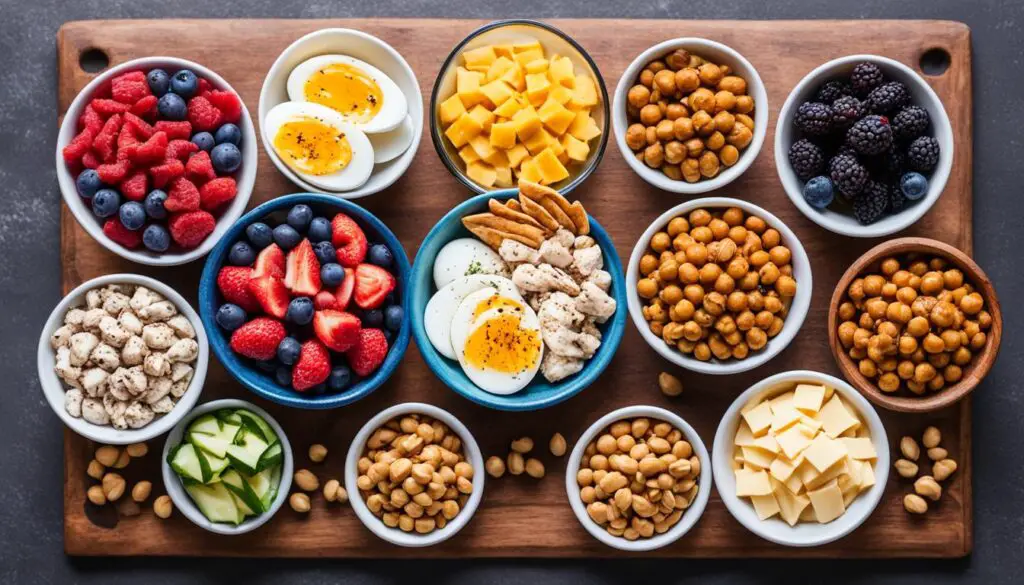
Future Mobility for Aging Populations: Adapting to Demographic Changes
As the global population continues to age, it is imperative that we find future mobility solutions that cater to the evolving needs of aging populations. These solutions are designed to address the challenges faced by older adults, such as accessibility, transportation, and independent living, ensuring that they can maintain their mobility and quality of life. With advancements in technology and a focus on innovation, various industries and organizations are developing innovative solutions to meet these challenges and support the elder community.
In this article, we will explore the importance of future mobility solutions in adapting to demographic changes and improving the lives of aging populations. We will dive into the innovative solutions being developed and how they are reshaping the way we approach mobility for older adults. From accessible transportation options to advancements in assistive technologies, we will cover the range of possibilities that can make a significant impact.
Key Takeaways:
- Future mobility solutions are essential in addressing the evolving needs of aging populations.
- Advancements in technology and innovation play a crucial role in developing innovative solutions for older adults.
- Accessible transportation options and assistive technologies are reshaping the way we approach mobility for aging populations.
- Investing in future mobility solutions can greatly improve the quality of life for older adults.
- It is imperative for individuals, communities, and organizations to prioritize the development and implementation of these solutions to support the growing needs of aging populations worldwide.
Nutrient-Dense Whole Foods for Weight Loss in Aging Populations
Eating nutrient-dense whole foods is vital for weight loss and overall health, especially for aging populations. These foods are packed with essential nutrients, vitamins, and minerals that support the body’s energy levels and daily activities. In addition to providing a wide range of nutrients, nutrient-dense whole foods are also more filling, helping older adults maintain a healthy body weight.
When it comes to weight loss and healthy eating, incorporating nutrient-dense whole foods into the diet is key. These foods offer a plethora of benefits for aging populations, including:
- Improved nutrition: Nutrient-dense whole foods are rich in vitamins, minerals, and antioxidants that contribute to optimal nutrition in older adults. This helps support overall health and well-being.
- Reduced risk of chronic diseases: Consuming nutrient-dense whole foods can help lower the risk of chronic diseases, such as heart disease, type 2 diabetes, and certain cancers. These foods contain beneficial compounds that support a healthy immune system and protect against cellular damage.
- Increased satiety: Nutrient-dense whole foods are generally higher in fiber, protein, and healthy fats, which help promote feelings of fullness and satisfaction. This can prevent overeating and support weight loss efforts.
Examples of nutrient-dense whole foods that are beneficial for weight loss in aging populations include:
| Food Group | Examples |
|---|---|
| Whole Grains | Brown rice, quinoa, oats, whole wheat bread |
| Fruits and Vegetables | Leafy greens, berries, citrus fruits, sweet potatoes |
| Lean Meats | Chicken breast, turkey, lean cuts of beef |
| Low-Fat Dairy Products | Yogurt, cottage cheese, low-fat milk |
| Eggs | Whole eggs or egg whites |
| Poultry and Fish | Chicken, salmon, trout |
| Beans and Legumes | Black beans, lentils, chickpeas |
| Nuts and Seeds | Almonds, walnuts, chia seeds, flaxseeds |
By incorporating these nutrient-dense whole foods into the diet, aging populations can experience improved weight management and overall health. These foods provide the necessary nutrients to support healthy aging and reduce the risk of chronic diseases, while also offering a variety of flavors and textures for enjoyable eating.
High-Protein Snacks for Weight Loss and Satiety in Aging Populations
When it comes to weight loss and maintaining a healthy lifestyle, protein is a key nutrient that plays a crucial role, especially for aging populations. Including high-protein snacks in their diet can have numerous benefits for older adults, including building muscle, increasing insulin sensitivity, and promoting satiety. Research suggests that high-protein diets not only aid in weight loss but also help individuals maintain their weight loss in the long run.
So, what are some examples of high-protein snacks that can support weight loss efforts and promote overall health in aging populations? Here are a few options:
- Nuts and seeds: Almonds, walnuts, chia seeds, and flax seeds are all excellent sources of protein. They can be enjoyed on their own or added to salads, yogurt, or smoothies.
- Greek yogurt: Greek yogurt is a protein powerhouse and also provides probiotics for gut health. Add some berries or a drizzle of honey for a delicious and nutritious snack.
- Cottage cheese: Cottage cheese is rich in protein and low in fat, making it an ideal choice for a satisfying snack. Enjoy it with fresh fruit or sprinkle some nuts on top for added crunch.
- Hummus and vegetables: Pairing protein-packed hummus with sliced cucumbers, carrots, or bell peppers makes for a nutritious and filling snack. It’s a great way to get both protein and fiber in one go.
- Hard-boiled eggs: Eggs are a complete source of protein and can be boiled and stored in the fridge for quick and easy snacking. Sprinkle some salt and pepper for extra flavor.
- Tuna salad on whole wheat crackers: Tuna is rich in protein and omega-3 fatty acids. Mix it with some Greek yogurt, celery, and onion for a tasty and nutritious snack. Serve it on whole wheat crackers for added fiber.
- Beef jerky: Beef jerky is a convenient and portable snack that provides a good amount of protein. Look for brands that have minimal additives and salt.
Including these high-protein snacks in the diet of aging populations can not only support their weight loss goals but also help them feel satisfied and energized throughout the day. Remember to combine these snacks with a balanced diet that includes plenty of fruits, vegetables, whole grains, and healthy fats for optimal nutrition.

“Protein is an essential nutrient for aging populations, aiding in weight loss, muscle maintenance, and satiety. Incorporating high-protein snacks into their diet can have a significant impact on their overall health and well-being.”
Fiber Intake and its Benefits for Aging Populations
Increasing fiber intake is essential for the well-being of aging populations. Not only does it aid in digestion and promote regular bowel movements, but it also provides a plethora of benefits that support overall health and well-being.
Fiber-rich foods, such as fruits, vegetables, beans, nuts, seeds, and whole grains, are not only low in calories but also packed with essential vitamins, minerals, and antioxidants. These nutrients contribute to improved digestion and help manage cholesterol and glucose levels, reducing the risk of cardiovascular diseases and diabetes. Moreover, fiber-rich foods promote feelings of satiety, making them a valuable addition to weight loss efforts among aging populations.
It is recommended that women aged 19 to 50 consume 25 grams of fiber per day, while men aged 19 to 50 should aim for at least 38 grams of fiber daily. Meeting these recommended fiber intake levels plays a crucial role in supporting overall health and reducing the risk of chronic diseases.

Benefits of Fiber Intake for Aging Populations:
- Promotes digestive health and prevents constipation
- Manages cholesterol levels and reduces the risk of heart disease
- Stabilizes glucose levels and helps manage diabetes
- Supports weight loss efforts by promoting feelings of fullness
- Provides essential nutrients for overall health and well-being
Adding fiber-rich foods to the diet can significantly improve the health and quality of life for aging populations. Not only do these foods aid in digestion, but they also provide numerous benefits that promote overall well-being.
By incorporating fiber-rich foods into their daily meals and snacks, aging populations can optimize their fiber intake and enjoy the numerous benefits it offers. Enhancing fiber intake is a simple yet effective means of supporting healthy aging and maintaining an active lifestyle.
Conclusion
In conclusion, future mobility solutions for aging populations play a crucial role in adapting to demographic changes and promoting an improved quality of life for older adults. These solutions, driven by innovative technologies and a strong emphasis on individual needs, effectively address challenges related to accessibility, transportation, and independent living. By integrating weight loss strategies like incorporating nutrient-dense whole foods, high-protein snacks, and increasing fiber intake, aging populations can further enhance their overall health and well-being.
It is imperative for individuals, communities, and organizations to continue developing and implementing these future mobility solutions to meet the growing needs of aging populations worldwide. By doing so, we can ensure that older adults have the means to maintain their independence, mobility, and quality of life well into their golden years.
The future of mobility for aging populations relies on the collaborative efforts of various stakeholders, including governments, technology companies, healthcare providers, and community organizations. By investing in research, development, and infrastructure, we can create a more inclusive and age-friendly society that caters to the unique needs of older adults.
In summary, future mobility solutions offer a promising pathway to support aging populations, allowing them to navigate their surroundings with ease while enjoying an improved quality of life. By leveraging innovative technologies and embracing a holistic approach, we can empower older adults to live independently, pursue their interests, and thrive in an ever-evolving world.
FAQ
What are future mobility solutions for aging populations?
Future mobility solutions for aging populations are innovative solutions that address accessibility, transportation, and independent living challenges faced by older adults. These solutions aim to cater to the evolving needs of aging populations and ensure a better quality of life.
Why are nutrient-dense whole foods important for weight loss in aging populations?
Nutrient-dense whole foods are essential for weight loss in aging populations as they provide necessary nutrients, vitamins, and minerals that support energy levels and daily activities. These foods are also more filling and help maintain a healthy body weight.
What are some examples of nutrient-dense foods?
Examples of nutrient-dense foods include whole grains, fruits and vegetables, lean meats, low-fat dairy products, eggs, poultry, fish, beans and legumes, nuts, and seeds.
How can high-protein snacks support weight loss and satiety in aging populations?
High-protein snacks can help build muscle, increase insulin sensitivity, and keep older adults feeling full and satisfied. Research shows that high-protein diets aid in weight loss and help maintain long-term weight loss.
What are some examples of high-protein snacks?
Examples of high-protein snacks include nuts and seeds, Greek yogurt, cottage cheese, hummus and vegetables, hard-boiled eggs, tuna salad on whole wheat crackers, and beef jerky.
Why is increasing fiber intake beneficial for aging populations?
Increasing fiber intake aids in digestion, manages cholesterol levels, stabilizes glucose levels, and promotes feelings of fullness in aging populations. Fiber-rich foods provide essential nutrients and support weight loss efforts.
What are some high-fiber foods that can be added to the diet?
High-fiber foods such as fruits, vegetables, beans, nuts, seeds, and whole grains are excellent choices to increase fiber intake. Women aged 19 to 50 should aim for 25 grams of fiber per day, while men aged 19 to 50 should consume at least 38 grams of fiber daily.
Source Links
- https://www.macaubusiness.com/deepx-unveils-all-in-4-ai-total-solution-at-ces-2024-four-ai-chips-transforming-on-device-ai-market/
- https://www.forbes.com/health/weight-loss/how-to-lose-weight-without-exercise/
- https://laist.com/brief/news/education/community-college-students-serve-as-basic-needs-support-guides-for-peers
